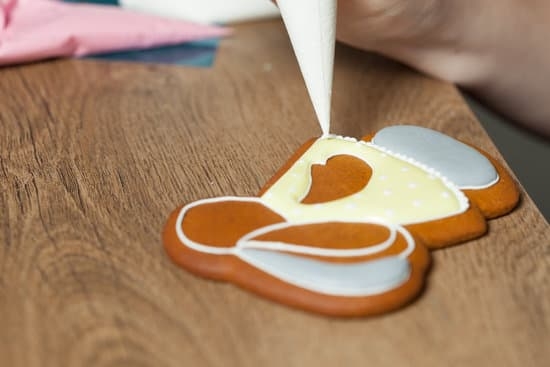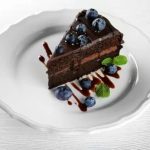Gum paste is a versatile and essential ingredient in the world of cake decorating. It provides decorators with the ability to create intricate designs, lifelike flowers, and detailed figures that elevate their creations to a professional level. But what exactly is gum paste for cake decorating?
Gum paste, also known as modeling paste, is a dough-like substance made from edible ingredients such as powdered sugar, gelatin, water, and sometimes gum tragacanth or tylose powder. It is pliable and can be molded into various shapes and forms to adorn cakes with stunning decorations. Unlike fondant, which is used primarily for covering cakes, gum paste is ideal for creating delicate elements that require structure and detail.
The origins of gum paste can be traced back centuries ago when it was traditionally used in European baking to craft intricate decorative pieces for desserts. Over time, gum paste has evolved to become a staple in the cake decorating industry, with decorators worldwide utilizing its versatility to bring their artistic visions to life. Its ability to dry quickly and hold its shape makes it a preferred choice for intricate cake designs that demand precision and elegance.
The Origins of Gum Paste and Its Evolution in the Cake Decorating Industry
Gum paste, also known as modeling paste, is a versatile and pliable edible material used in cake decorating to create intricate designs, figures, and decorations. This sugar-based dough-like substance is made from a mixture of confectioner’s sugar, glucose, water, gelatin, and sometimes shortening. The addition of tylose powder or CMC (carboxymethyl cellulose) helps gum paste harden and hold its shape once dried.
The origins of gum paste can be traced back to ancient Egypt where it was used not only for culinary purposes but also for artistic creations such as intricate cake decorations. Over time, the art of working with gum paste has evolved through various cultures and cuisines, each adding their unique touch to the craft. Today, gum paste has become an essential tool for professional cake decorators and home bakers alike, allowing them to take their creations to new heights.
In comparison to fondant, another popular cake decorating material, gum paste offers more flexibility and dries harder which makes it perfect for creating 3D decorations such as flowers, figurines, and other intricate details. While fondant is great for covering cakes with a smooth finish, gum paste provides the stability needed to craft delicate elements that can stand alone or be placed on top of cakes without losing their shape or detail.
Both mediums have their own strengths and are often used together in cake decorating projects to achieve stunning results.
| Gum Paste Characteristics | Uses in Cake Decorating |
|---|---|
| Plasticity | Creating intricate designs and figures |
| Hardens when dried | Making flowers that hold their shape |
| Can be colored easily | Adding vibrant decorations to cakes |
Differences Between Gum Paste and Fondant
Gum paste and fondant are two popular options when it comes to cake decorating, each with its own unique properties and uses. While fondant is a smooth, flexible icing that is rolled out like dough and draped over cakes for a flawless finish, gum paste is a firmer, pliable substance that dries quickly and can be molded into intricate shapes and designs.
One of the key differences between gum paste and fondant is their ingredients. Gum paste typically consists of confectioner’s sugar, water, gelatin, tylose powder (also known as CMC powder), and vegetable shortening.
The addition of tylose powder gives gum paste its elasticity and quick-drying properties, making it ideal for creating decorative elements that need to hold their shape. On the other hand, fondant is made from sugar, water, gelatin or agar-agar, and sometimes glycerin or corn syrup for added flexibility.
In terms of texture and appearance, gum paste has a smoother finish compared to fondant, which can sometimes have a coarse or grainy texture. This makes gum paste the preferred choice for creating delicate flowers, intricate figures, and other detailed decorations on cakes.
Fondant is better suited for covering larger surfaces smoothly and can be flavored or colored easily to match the overall theme of the cake. Ultimately, the choice between gum paste and fondant depends on the specific design requirements of your cake decoration project.
| Gum Paste | Fondant |
|---|---|
| Smoother finish | Can have a coarse texture |
| Moldable into intricate shapes | Ideal for covering large surfaces smoothly |
| Elasticity due to tylose powder | Flavoring and coloring flexibility |
Tools and Materials Needed to Work With Gum Paste for Cake Decorating
Working with gum paste for cake decorating requires a specific set of tools and materials to ensure the best results. Here are some essential items you will need to have on hand when working with this versatile decorating medium:
Gum Paste
The main ingredient, gum paste, is a type of sugar dough that is pliable and can be easily shaped and molded into various designs. It is known for its ability to hold intricate shapes and details, making it perfect for creating edible decorations for cakes.
Rolling Pin
A non-stick rolling pin is essential for rolling out the gum paste to the desired thickness. Make sure to dust it with cornstarch or powdered sugar to prevent sticking.
Cutting Tools
Sharp knives or pizza cutters are necessary for cutting out shapes and trimming excess gum paste. You may also want to invest in small cutters or shaping tools for more intricate designs.
Foam Pads
Foam pads provide a soft surface for thinning out edges of petals or leaves and shaping delicate pieces. They help create realistic textures and dimensions in your gum paste creations.
Food Coloring
Gel food colors are preferred for tinting gum paste as they offer vibrant shades without altering the consistency of the dough. Start with small amounts and knead well until you achieve the desired color.
Having these tools and materials on hand will make working with gum paste for cake decorating much smoother and more enjoyable. With practice and creativity, you can create stunning edible decorations to elevate your cakes to the next level.
Step-by-Step Guide to Making Gum Paste From Scratch
Gum paste is a versatile and indispensable tool in cake decorating, known for its ability to create intricate designs and lifelike details. Making gum paste from scratch may seem daunting, but with the right ingredients and technique, you can achieve professional-looking results that will elevate your cake designs.
To make gum paste from scratch, you will need a few key ingredients: powdered sugar, tylose powder or CMC powder (for added elasticity), gelatin, water, and vegetable shortening. Start by blooming the gelatin in water according to the package instructions, then heat it until fully dissolved. Next, mix together the powdered sugar and tylose powder in a large bowl before adding the liquid gelatin mixture. Stir until the ingredients come together to form a sticky dough.
Once your gum paste mixture is well combined, knead it on a clean work surface dusted with powdered sugar until smooth and pliable. Be sure to add more powdered sugar as needed to prevent sticking. Your gum paste should be firm yet elastic enough to hold its shape when molded or rolled out. Wrap it tightly in plastic wrap and let it rest for at least 30 minutes before using it for cake decorations.
Making your own gum paste from scratch gives you the freedom to customize the consistency and color of your decorations. Experiment with different flavors or colors by adding extracts or food coloring during the mixing process. With practice and patience, you can master the art of working with gum paste for cake decorating and create stunning edible works of art that will impress any audience.
Tips and Tricks for Working With Gum Paste
Gum paste is a versatile medium that can be used to create intricate designs and details for cake decorating. While it may seem daunting to work with at first, with the right tips and tricks, you can achieve professional results that will impress your clients or guests. Here are some helpful guidelines to help you master the art of working with gum paste for cake decoration.
Proper Preparation and Handling
Before working with gum paste, it is important to ensure that your hands are clean and free from any oils or lotions that could affect the texture of the gum paste. Dust your work surface with some cornstarch to prevent sticking, and knead the gum paste until it is smooth and pliable. To avoid drying out, always keep unused portions covered with plastic wrap or in an airtight container.
Rolling and Shaping Techniques
When rolling out gum paste, use a rolling pin dusted with cornstarch to prevent sticking. Roll the gum paste evenly into a thin sheet, making sure not to apply too much pressure which could lead to tearing. To create different shapes or figures, use cookie cutters, molds, or shaping tools designed specifically for gum paste. Be patient and take your time when shaping intricate details to avoid breakage.
Drying and Setting Time
After creating your desired decorations or figures with gum paste, allow them to dry completely before placing them on your cake. This process can take anywhere from a few hours to overnight depending on the size and thickness of the piece.
To speed up drying time, place your gum paste creations in front of a fan or use a food dehydrator set on low heat. Once fully dried and set, carefully place them on your cake using edible glue or royal icing for adherence.
By following these tips and tricks for working with gum paste, you can achieve professional-looking results in your cake decorations. Practice makes perfect, so don’t be discouraged if you encounter challenges along the way. With patience and dedication, you’ll soon be able to create stunning cakes adorned with beautiful gum paste designs that will leave everyone in awe of your talent and skill.
Creative Ways to Use Gum Paste in Cake Decorating
Gum paste is a versatile and essential ingredient in cake decorating, known for its ability to create intricate decorations such as flowers, figures, and more. Whether you are a beginner or an experienced baker, adding gum paste decorations to your cakes can take them to the next level. Here are some creative ways to use gum paste in cake decorating:
- Flowers: Gum paste is commonly used to create stunning flowers that look realistic and delicate. From roses to daisies to peonies, the possibilities are endless when it comes to floral designs. By using different techniques such as molding, shaping, and dusting with edible colors, you can achieve a beautiful bouquet of gum paste flowers that will impress any guest.
- Figures: Another popular way to use gum paste in cake decorating is by creating edible figures. Whether it’s animals, people, or objects, gum paste can be sculpted into various shapes and sizes. With some practice and patience, you can bring your favorite characters or themes to life on top of your cake.
- Beyond: Aside from flowers and figures, gum paste can also be used to add unique textures and details to your cakes. From lace patterns to intricate designs, the possibilities are endless. You can mix and match different techniques to create visually stunning decorations that will make your cakes stand out from the rest.
Overall, the creative ways to use gum paste in cake decorating are limited only by your imagination. With the right tools, materials, and techniques, you can elevate your cake designs from ordinary to extraordinary. So next time you’re planning a special occasion or celebration, consider incorporating gum paste decorations for a show-stopping display that will leave everyone amazed at your skills.
Remember that practice makes perfect when working with gum paste for cake decorating. Don’t be afraid to experiment with different shapes, colors, and designs until you achieve the desired result. With dedication and creativity, you can master the art of using gum paste in cake decoration and create breathtaking edible works of art that will wow any crowd.
Common Mistakes to Avoid When Using Gum Paste for Cake Decoration
When using gum paste for cake decoration, there are certain common mistakes that beginners often make. One of the most frequent errors is not kneading the gum paste properly before use.
Proper kneading helps to create a smooth and pliable texture, making it easier to work with and ensuring your decorations turn out well. Be sure to knead the gum paste until it is soft and flexible, but be careful not to over-knead as this can cause it to become too sticky.
Another mistake to avoid is rolling out the gum paste too thin or too thick. The ideal thickness for gum paste decorations is around 1/8 of an inch. If it’s too thin, the decorations may break easily; if it’s too thick, they may look bulky and lack finesse. Use spacers or guides to help you achieve the perfect thickness when rolling out your gum paste.
It’s also important to remember that gum paste dries quickly, so it’s essential to work efficiently and cover any unused portions with plastic wrap or a damp cloth to prevent them from drying out. Additionally, avoid touching the gum paste with wet hands as this can cause it to become sticky and difficult to work with.
By being mindful of these common mistakes and taking steps to prevent them, you can ensure a smoother cake decorating experience with gum paste.
Conclusion
In conclusion, the use of gum paste in cake decorating opens up a world of creative possibilities for both amateur and professional bakers alike. Its versatility and beauty make it an essential tool for achieving intricate and stunning designs on cakes. From delicate flowers to lifelike figures, gum paste allows decorators to bring their imagination to life in edible form.
What is gum paste for cake decorating, if not a vehicle for innovation and artistry? Its origins may be traced back centuries, but its evolution in the modern cake decorating industry has revolutionized the way we approach dessert design. When compared to fondant, gum paste offers a firmer texture that holds intricate shapes with ease, making it ideal for sculpting detailed decorations that truly elevate the overall look of a cake.
For those looking to dive into the world of gum paste for cake decorating, it is essential to have the right tools and materials at hand. Investing in quality supplies will ensure smoother work processes and more professional-looking results.
And while working with gum paste may require practice and patience, following a step-by-step guide to making your own from scratch will give you greater control over the final product. Remember, with dedication and creativity, the possibilities are endless when it comes to using gum paste to enhance your cake designs.
Frequently Asked Questions
What Is Better Gum Paste or Fondant?
Gum paste and fondant are both popular choices for cake decorations, but they serve different purposes. Gum paste is preferred for intricate sugar flowers and figurines due to its ability to hold intricate shapes and dry hard.
Fondant, on the other hand, is smoother and more pliable, making it great for covering cakes with a sleek finish. The choice between gum paste and fondant depends on the specific design requirements of the cake.
What Is Cake Gum Paste?
Cake gum paste is a versatile sugar-based dough that is commonly used in cake decorating. It can be rolled out thinly to cover cakes or create edible decorations such as flowers, leaves, and figurines.
With gum paste, decorators have more control over shaping intricate details compared to fondant. Its quick-drying nature also makes it ideal for creating decorations ahead of time.
How Do You Stick Gum Paste to a Cake?
When sticking gum paste to a cake, it’s essential to use food-safe adhesives like royal icing or edible glue. Apply a small amount of adhesive to the back of the gum paste decoration before gently pressing it onto the cake surface.
For larger or heavier decorations, provide additional support using toothpicks or floral wire inserted into the cake before attaching the gum paste element. Properly securing gum paste decorations ensures they stay in place throughout serving and display.

Welcome to our cake decorating blog! My name is Destiny Flores, and I am the proud owner of a cake decorating business named Cake Karma. Our mission is to provide delicious, beautiful cakes for all occasions. We specialize in creating custom cakes that are tailored specifically to each customer’s individual needs and tastes.





